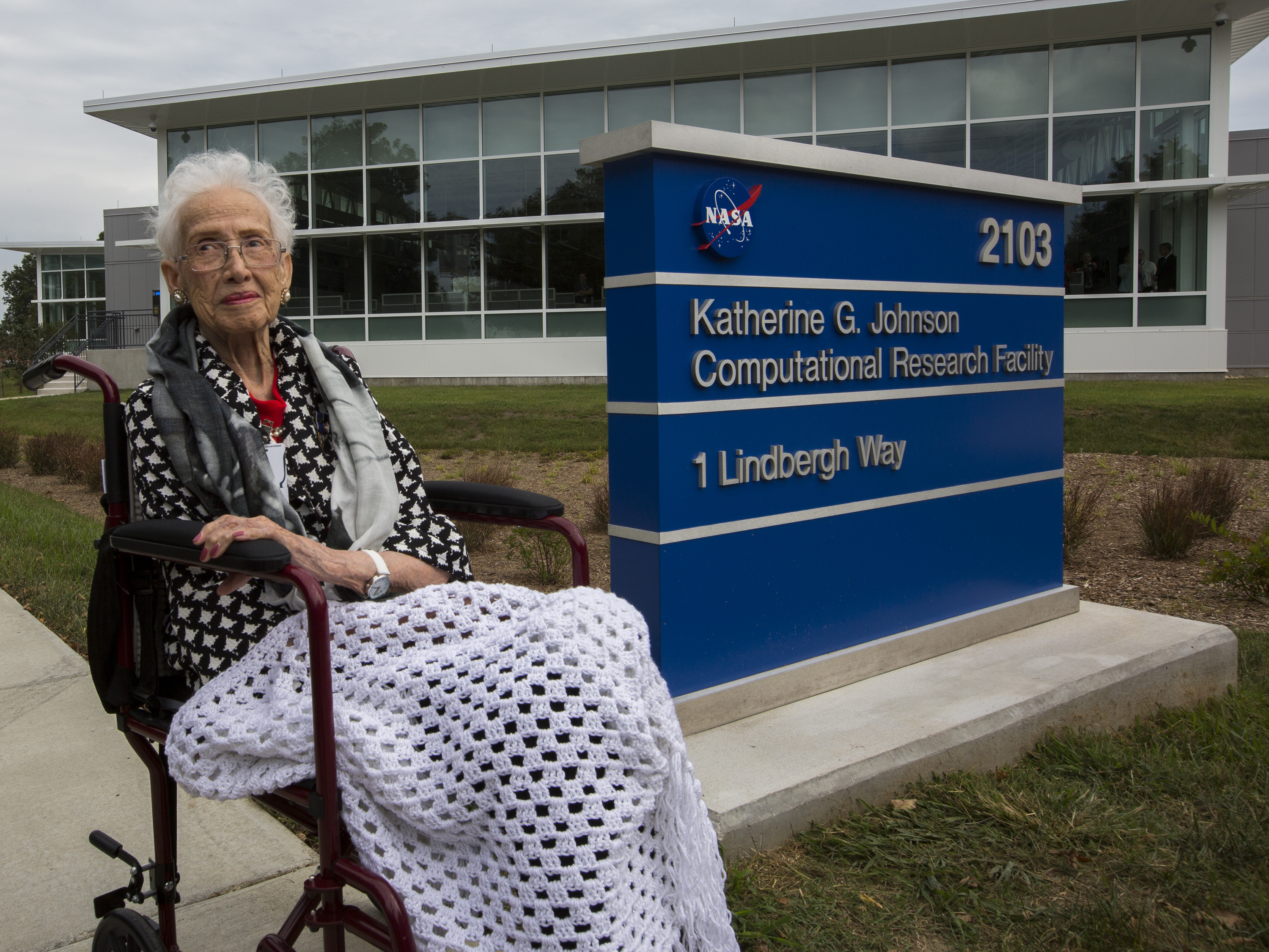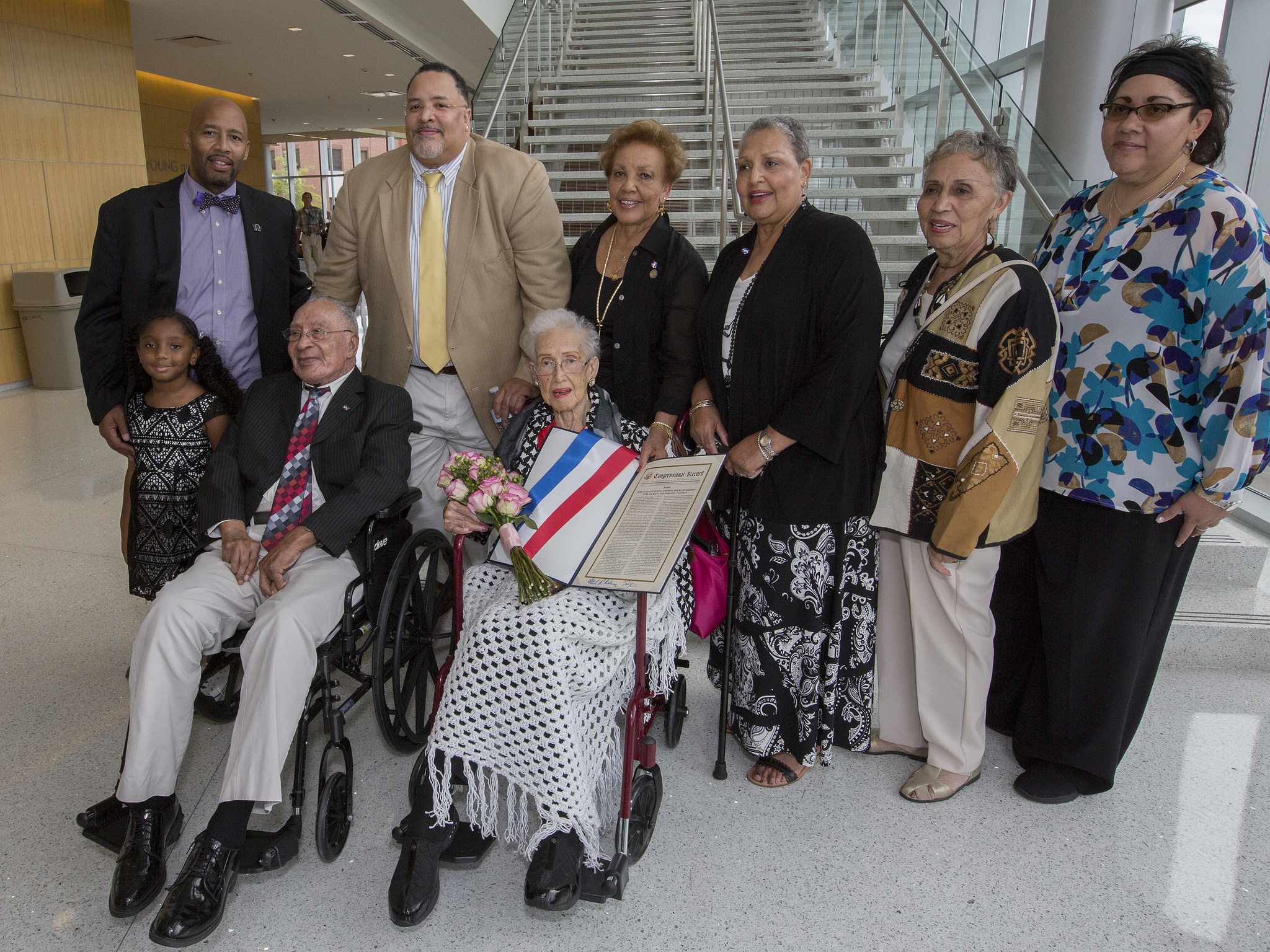NASA Langley's Katherine G. Johnson Computational Research Facility Opens
The Katherine G. Johnson Computational Research Facility, named for a mathematician whose calculations helped put the first Americans in orbit and onto the moon, has opened its doors after a ribbon-cutting ceremony.
The new computation center is situated at NASA's Langley Research Center in Virginia, where Johnson and other "human computers" calculated the trajectories that made early spaceflight possible. During the Sept. 22 ribbon cutting, special guests included Virginia Gov. Terry McAuliffe; Hampton, Virginia, Mayor Donnie Tuck; Virginia Sen. Mark Warner; and NASA Deputy Associate Administrator Dan Tenney — along with Katherine Johnson herself, who is now 99 years old, and her biographer, Margot Shetterly.
The "building sets the stage for our continuing digital transformation in an exciting new era of sophisticated modeling and simulation," David Bowles, Langley's director, said during the ribbon cutting. "We know that these are the tools that will help us shape the world of the future, just as Langley's wind tunnels have helped shape nearly every aircraft that's in the skies flying today." [William Shatner Narrates History of NASA's 100-Year-Old Langley Research Center (Video)]
"Thanks to this new building's robust, carefully designed infrastructure, we'll do more calculations than ever, and we'll do them faster, more efficiently and with more reliability," he added.
Johnson was honored with a Presidential Medal of Freedom in 2015, and her story and that of her fellow computers at Langley was recently told in Shetterly's book "Hidden Figures," which was also made into a movie.
Shetterly was the keynote speaker at the dedication, and had this to say about Johnson's legacy: "By now, most of us know the details of the work that Katherine Johnson did here at NASA; we know about the calculations she provided for Alan Shepard's flight [the first American to fly in space], the calculations she provided for John Glenn's pioneering orbital flight. We know about the math that she contributed to the parking orbit calculations for the Apollo 11 mission to the moon," she said.
"Today, all of those things seem inevitable, but without her past, full of diverging roads and choices that made all the difference, we would not be standing on the brink of this future," Shetterly added.
Breaking space news, the latest updates on rocket launches, skywatching events and more!
The new facility is 37,000 square feet (3,400 square meters), and around 1,200 servers will be moved there in the fall, NASA officials said; these servers will have the computational power to do far more than Johnson and her colleagues, who worked by hand and with simple calculating machines, could ever accomplish.
But "what we're really doing is taking lessons learned when Katherine Johnson and her fellow human computers calculated spacecraft trajectories with paper, pencil and adding machines, and applying them to today's missions," Bowles said. "With this new facility, we will continue to advance the same techniques that she used to such spectacular effect, and I can't imagine a better tribute to Mrs. Johnson's character and accomplishments than this building that will bear her name."
Johnson herself attended the event and helped cut the ribbon, but she didn't give a speech; instead, the audience watched a recent video interview with the mathematician.
"The main thing is, I liked what I was doing," she said in the video. "I liked work. I liked the stars and the stories we were telling. And it was a joy to contribute to the literature that was going to be coming out. But little did I think that it would go this far."
Email Sarah Lewin at slewin@space.com or follow her @SarahExplains. Follow us @Spacedotcom, Facebook and Google+. Original article on Space.com.

Sarah Lewin started writing for Space.com in June of 2015 as a Staff Writer and became Associate Editor in 2019 . Her work has been featured by Scientific American, IEEE Spectrum, Quanta Magazine, Wired, The Scientist, Science Friday and WGBH's Inside NOVA. Sarah has an MA from NYU's Science, Health and Environmental Reporting Program and an AB in mathematics from Brown University. When not writing, reading or thinking about space, Sarah enjoys musical theatre and mathematical papercraft. She is currently Assistant News Editor at Scientific American. You can follow her on Twitter @SarahExplains.


